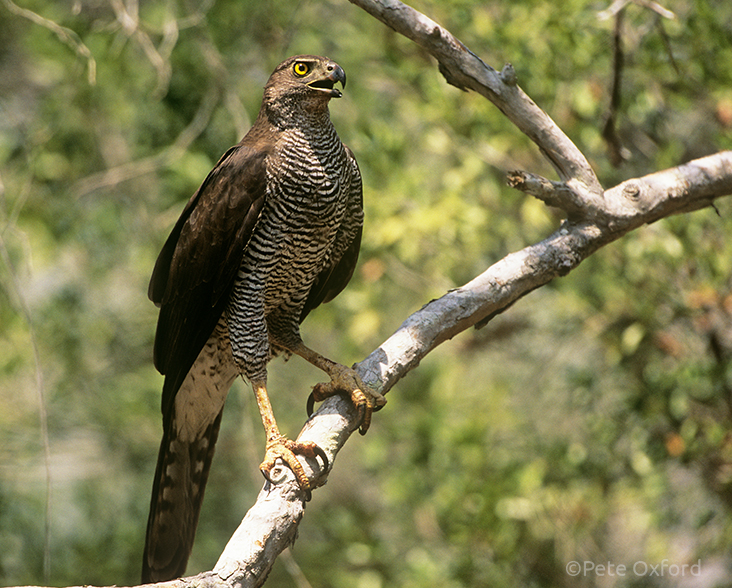Henst’s Goshawk
Species Data
Class: Aves
Order: Accipitriformes
Family: Accipitridae
Scientific Name: Accipiter henstii
IUCN Red List status: Vulnerable
DESCRIPTION
Henst’s Goshawk is a large bird of prey, best identified by the grey feathers on its back and crown, and a pattern of bars on the throat, breast, and belly. It has a charcoal grey beak and long yellow legs. Whilst its feather colours and patterns are very similar to the Madagascar Sparrowhawk, Henst’s Goshawk is much greater in size, with only the smaller males likely to be confused with female sparrowhawks. It may also be misidentified as the larger Madagascar Serpent-Eagle, which has darker plumage.
BEHAVIOUR
Henst’s Goshawk hunts medium-to-large birds and small mammals-including some species of lemur-below the canopy line of the forests it inhabits. Taking advantage of low light on the forest floor, Henst’s Goshawk ambushes its prey from above, using its powerful talons and curved beak to take down its targets.
With large home ranges, Henst’s Goshawk travels great distances in search of prey and nesting sites. Nests are constructed of sticks and located in the forks of trees, with two eggs laid per clutch between October and November. Though they may appear to mate strictly in pairs, Henst’s Goshawks are not true monogamists, and may maintain multiple relationships with other individuals.


HABITAT
Henst’s Goshawk is endemic to Madagascar and is found in forests across the island, with the exception of the Southwest regions. Likely due to a scarcity in sightings of the bird, little is known regarding the exact habitat preferences of Henst’s Goshawk, except that it is reliant upon a forest habitat. It is thought that it does not occur more than 1,800 metres above sea level.
THREATS AND CONSERVATION
The primary threat posed to Henst’s Goshawk is deforestation. Slash-and-burn methods of land clearing for agriculture are contributing to heavy forest cover loss across Madagascar, which threaten both Henst’s Goshawk and its prey. This is believed to be contributing to an ongoing decline in the species’ abundance, raising concerns that it is becoming ever more vulnerable to extinction.
